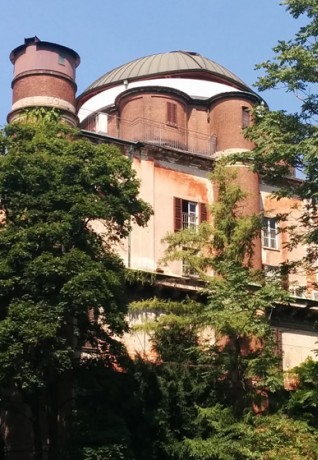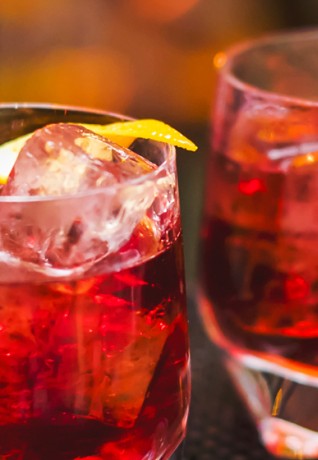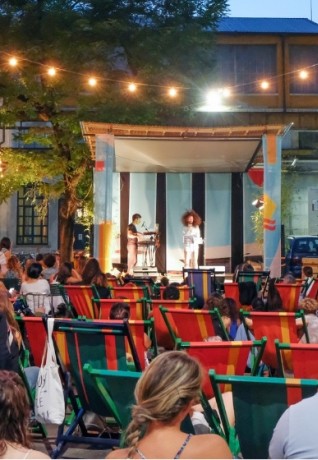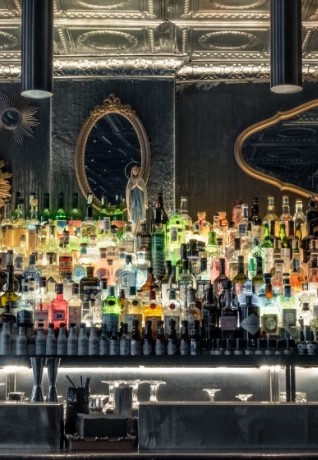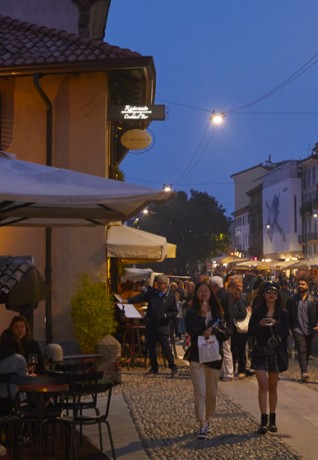Aperitivo in Milano
“Feel the Aperitivo mood” in 10 top areas of the city
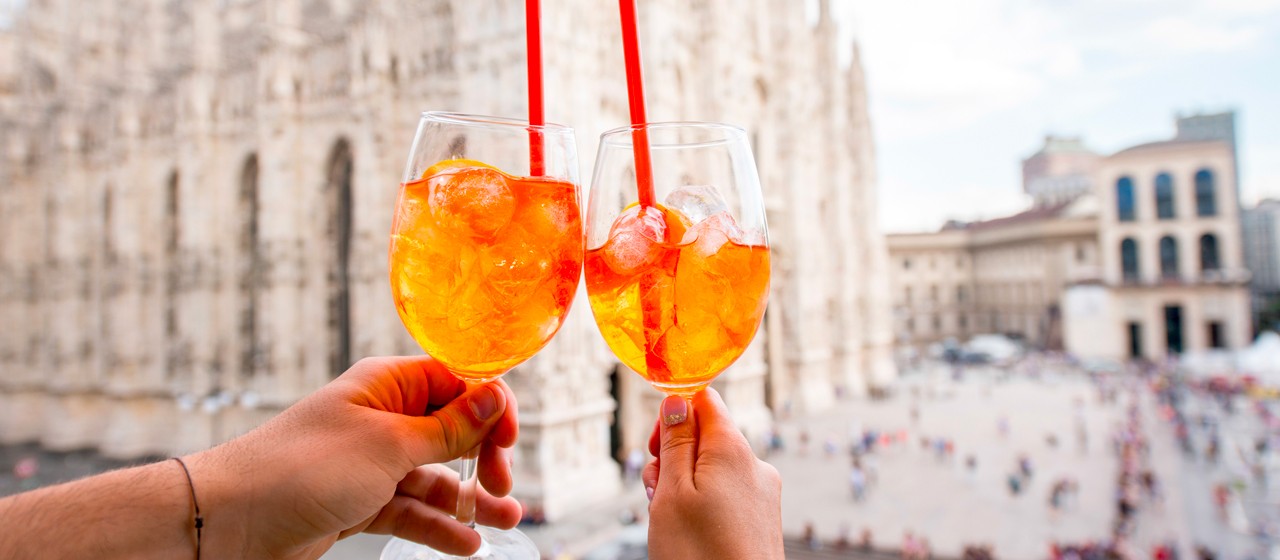
When: every day from 18:00 to around 21:00, with some exceptions where the vibe is carried on until late at night.
Where: anywhere in the city
During a typical Milanese day, marked by the hectic pace of study and work, the aperitivo embodies that pleasant moment of transition that looks forward to dinner and is dedicated to sharing words and ideas, to meet and have brilliant conversations with people. A magic moment, nearing sunset but bringing with it all the richness of the day just spent and the lightheartedness of company.
If you want to find the inspiration for your future projects, chat in front of a good drink and taste typical food (whether Milanese or exotic) for a good value, then aperitivo is the key to the spirit of Milano and its citizens. Whether organized to spend family time, have fun with friends, or discover the wittier side of one's colleagues, the aperitivo is an opportunity to play down the accumulated fatigue and recharge your batteries.
From dusk to dawn, aperitivo bars open up to parallel culture movements, becoming creative factories, piazzas, privileged locations for exhibitions, concerts, happenings, festivals and events; co-working areas, opportunities for training and personal growth. The essential element is a cocktail, alcoholic or soft, traditional or innovative, together with the accompanying appetizers, making the natural flow of thoughts more enjoyable.
The formula is variable in Milano: one moves from itinerant aperitivi, which use social networks to create live tasting opportunities in constantly changing spots of the city, to the most popular nightlife venues.
The Duomo central area is an evergreen - a classic revisited with a touch of glamour. The keyword to describe the atmosphere is panorama, accessible from the numerous rooftop bars that allow for breathtaking views and that feeling of walking on top of the city that never sleeps. The atmosphere is cool but relaxed. If you suffer from vertigo, many venues can satisfy your food and drink requirements. From the homegrown bistronomiques to the bakeries still open for aperitivo and beyond, the offer is both touristy and dynamic.
These canals have always been considered the epicentre of the Milanese aperitivo. In addition to the number of dedicated venues, in this area one can meet the city's creative mood, as conveyed through the canals' romanticism, the shops' retro and radical chic charm, the almost individually tailored food options. The Darsena, with its pier, the bycicles' comings and goings and its distinguished smart style, presents various alternative and delicious opportunities to enjoy the almost summer-holiday scenery, in the utmost light-heartedness.
Cultural aperitivo is at home in one of the most fashionable areas of the city - Porta Genova / Via Tortona: here art in food blends with the imagination and a drink is not limited to mere tastebuds entertainment, but combines different body and mind recreational activities (including DJ sets, surfer yoga and revival parties) which often extend into the morning.
Moving to the North-East, find the great excitement of Porta Romana, a district that brings together different souls and expresses itself in all its multi-faceted nature. The offer is lively and vast: from for real gourmand's kiosks to a farm mood. From a barefoot aperitivo by the pool to one immersed in the alternative music scene. Cafés are characterized by a shabby-chic look and a futuristic reinterpretation of post-industrial style, with special care for diverse tastes (vegetarian, vegan, organic) and for the wholesomeness of the products.
The most stylish place is Porta Venezia, the Pride cradle. Many wine shops and wine rooms for food and wine tastings, in a modern and glamorous atmosphere, with a touch of wildness.
Indie spirit in Città Studi / Piola / Lambrate: the aperitivo mood is fresh and casual here, as well as eco-sustainable. Continue to Stazione Centrale, a place of passage for travellers, but also a meeting point for gatherings of friends who plan new adventures. In Buenos Aires / Lima a touch of glam design and attention to the dining options complete the picture.
The melting pot joins a green vocation between Isola district and Chinatown: this is the area with the most significant intermingling of cultures, in which the North mixes with the exotic and a marked ethnic character. The sense of community is strong: cultural contamination runs through the former industrial areas subject to redevelopment, to the inner courtyards transformed into clubs, to the familiar touch of the small-town bars. Aperitivo is the pretext to stir up a good mood and feel good together.
Always on the run - in Parco Sempione, a constantly moving crossroads of young people, tourists and runners, who find refreshment at the kiosks and chiringuitos scattered among the paths leading to the Castello Sforzesco. Many events involving the pleasure of street food and live music, especially when Estate Sforzesca is in full swing.
Not far away the Brera area, among the most characteristic of the city for the refinement and the peculiarity of the bohemian premises, the colors of the flowers adorning shops and bars, the pink trend and Belle Époque atmosphere that would have pleased the curious tourist character Of Woody Allen's Midnight in Paris so much. This is the place to meet the city's thinkers in a healthy, cheap & chic atmosphere.
Pop vibes in the no longer peripheral areas from San Siro to Lorenteggio: make way for farmhouses and artisan flavours! Toast with homemade beers, eat local produce, listen to indie and folk music under the stars, or enjoy an outdoor movie. An ideal option for those with a more alternative convivial or family spirit, who want to reconcile with the world.
Let's go back in time to the fifth century AD, when the Greek physician Hippocrates prescribed one of his own concoctions to patients suffering from lack of appetite: vinum hippocraticum, consisting of sweet white wine, macerated dittany, wormwood and rue. This recipe was passed on to the Romans who called it vinum absinthiatum (with wormwood) and added rosemary and sage to improve the bitter taste. In the Middle Ages herbal pharmacology established that the properties of bitter substances stimulated the sense of hunger. It was then a relatively short step from medicine to aperitivo as we know it today.
Turin, late 1700s: Sig. Antonio Benedetto Carpano had the brilliant idea of selling a bottled wine flavoured with china (cinchona), naming it vermouth. The breakthrough came several years later when King Vittorio Emanuele II was presented with a box of vermouth. The king so appreciated the punt e mes of bitter (one part of sweetness and half a part of bitterness) that he dubbed it Punt e Mes and declared it the Court’s official drink. The aperitivo custom quickly spread from Torino to the rest of Italy. In Milano, at the beginning of 1800, Mr Ramazzotti was the first to create an alcohol-based aperitif in which he macerated as many as 33 herbs and roots from all over the world, thus creating the famous Amaro Ramazzotti.
It was 1862 when Mr. Gaspare Campari, the owner of a well-known coffee bar in Milano, launched Bitter on the market, a new crisp and slightly bitter aperitif to be savoured by his male and female clients in the shadow of the Madonnina while comfortably sitting in what became the city’s iconic bar: Camparino.
The drink eventually became a social phenomenon. The traditional glass of wine, served with olives on a cocktail stick, transformed into an actual cocktail and the list of drinks got longer and longer. Only towards the end of the century was the ritual enriched with a selection of appetizers, thanks to the legacy of the American Happy Hour. Today venues of all kinds offer endless variations on the theme.

 Log in
Log in

